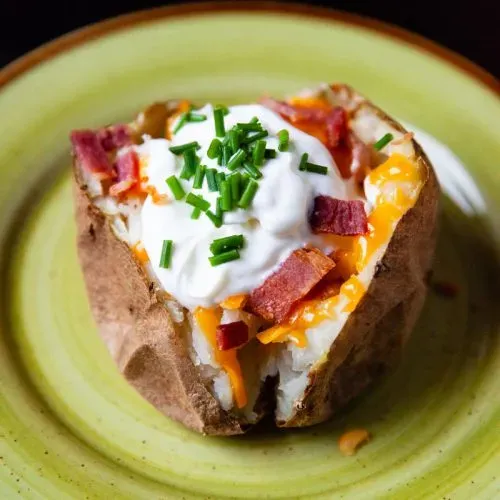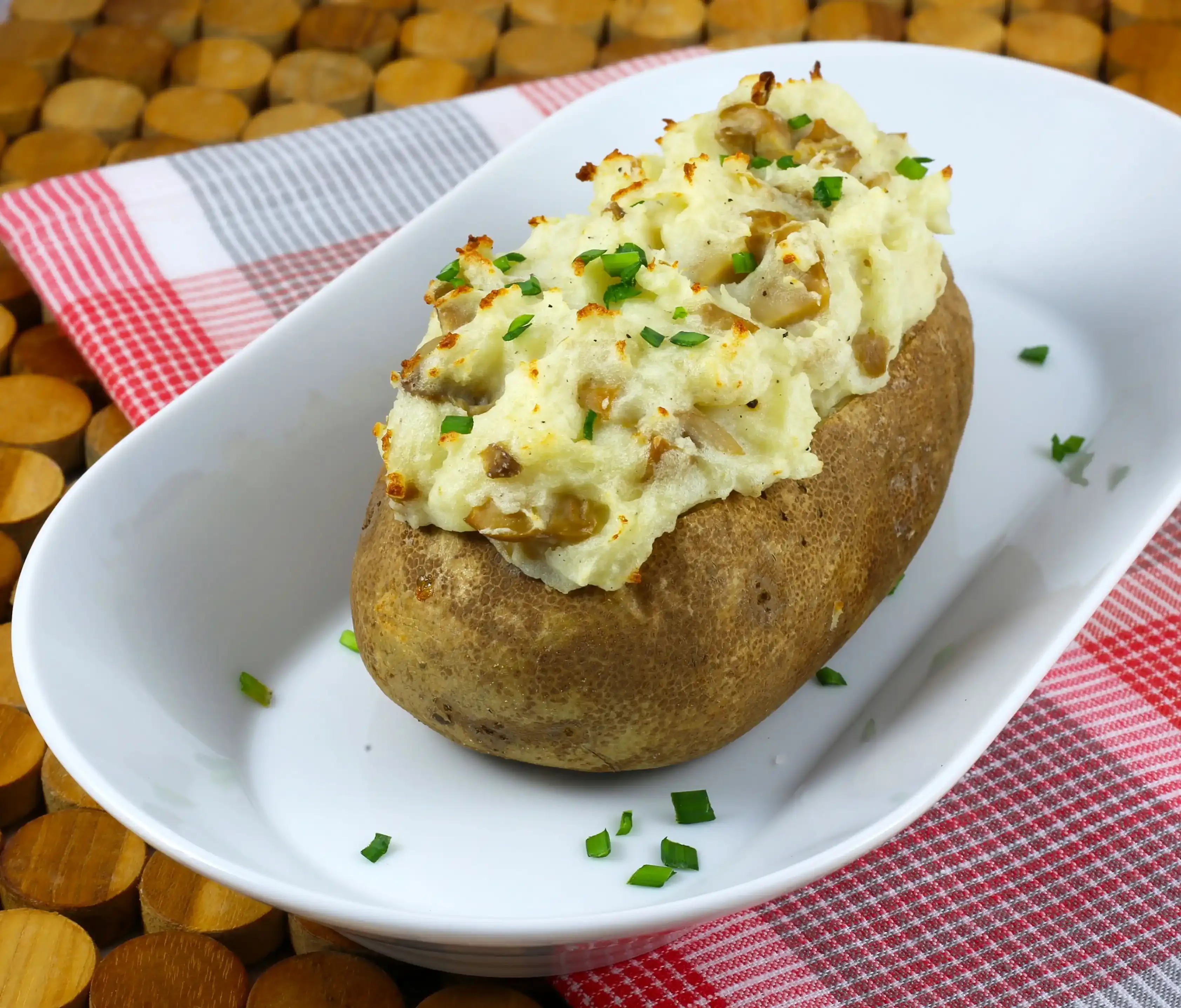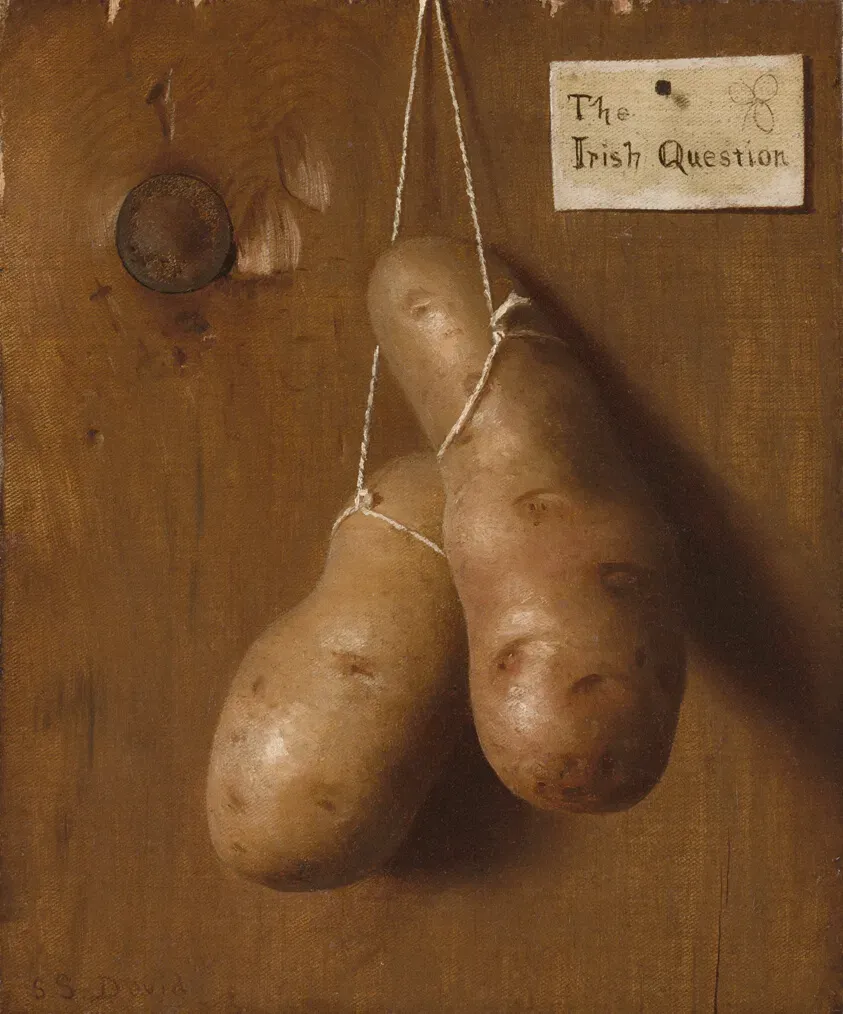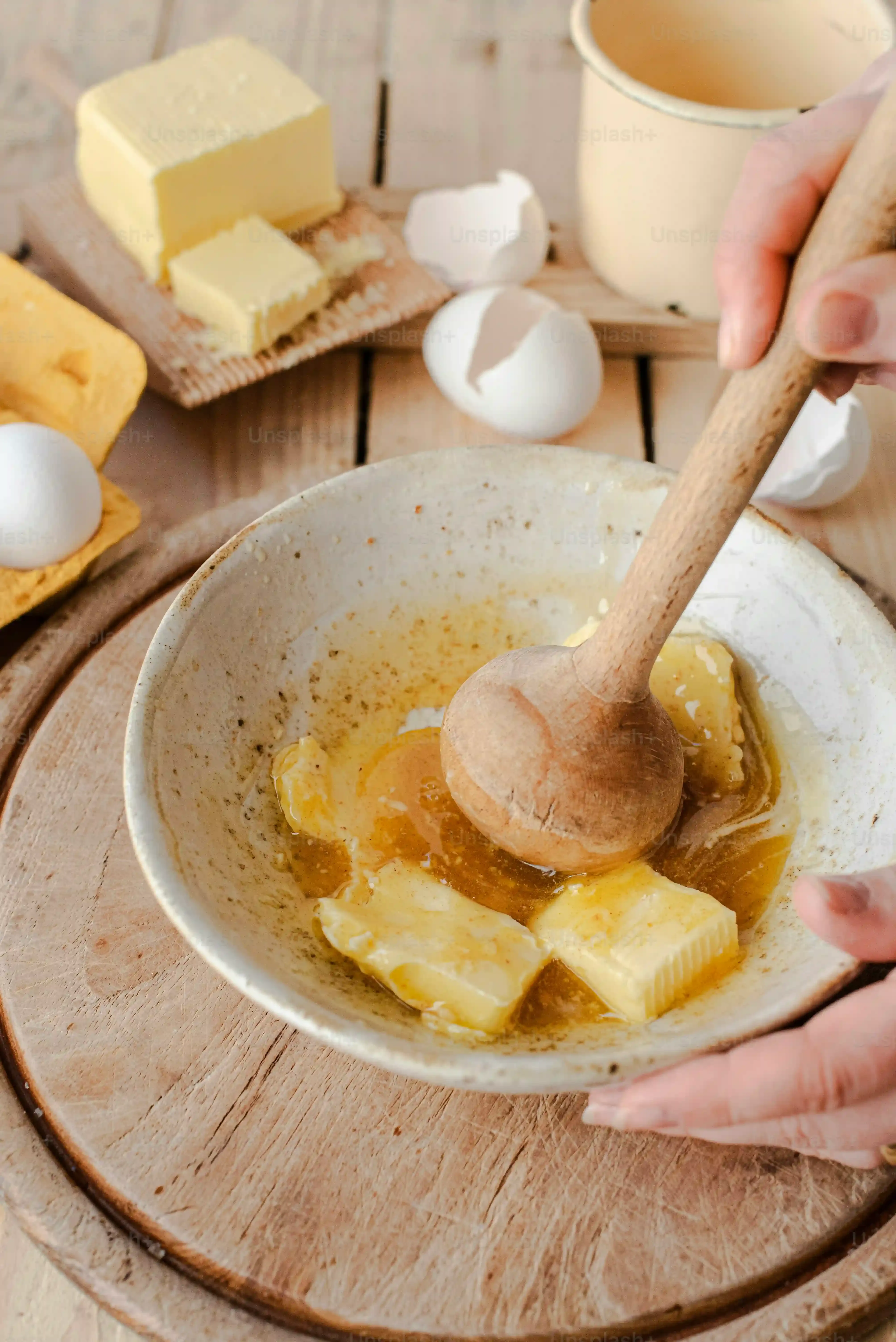Table of Contents
Let's be honest, a plain baked potato is fine. It's a blank canvas. But a baked potato loaded with creamy sour cream and gooey melted cheese? That's a whole different ballgame. It’s comfort food royalty, a side dish that often steals the show. Forget those sad, dry spuds you sometimes get; we’re talking about achieving fluffy interiors and a rich, tangy, cheesy topping that makes you wonder if you even need a main course.
Selecting and Baking the Foundation: Perfect Potatoes

Selecting and Baking the Foundation: Perfect Potatoes
Alright, let's get down to business. You can't build a great loaded potato without a solid foundation, and that means picking the right spud. For making baked potatoes with sour cream and cheese, the Russet potato is your best friend. Why Russet? Because its high starch content is key to getting that fluffy, airy interior once baked. Other potatoes, like reds or Yukon Golds, are waxier and better suited for boiling or roasting, but they just won't give you that cloud-like texture you want for scooping and mixing. Look for potatoes that are firm, free of bruises or soft spots, and roughly the same size so they bake evenly. Give them a good scrub under running water to get rid of any dirt. Don't skip this; nobody wants gritty potato skin.
Crafting the Creamy Core: How to Make Baked Potatoes with Sour Cream and Cheese

Crafting the Creamy Core: How to Make Baked Potatoes with Sour Cream and Cheese
Scooping and Mashing the Fluff
your potatoes are baked to perfection – tender inside, skin crispy outside. Now comes the fun part, or the slightly messy part, depending on your technique. Let the potatoes cool for a few minutes so you don't burn your fingers off. Grab a sharp knife and slice lengthwise across the top of each potato. Use a spoon to carefully scoop out the hot, fluffy potato flesh into a medium bowl, leaving a thin shell behind. Be gentle; you don't want to tear the skin. Think of the skin as the sturdy boat for your delicious filling. Discard that thin top slice you cut off earlier, unless you really like potato parchment. Now, grab a fork or a potato masher and give the scooped-out potato a good mash. Don't go crazy like you're making baby food; a few small lumps are perfectly acceptable and add character.
Mixing in the Magic: Sour Cream and Cheese
This is where the magic happens and you start to see how to make baked potatoes with sour cream and cheese truly shine. To that mashed potato fluff, add a generous dollop of full-fat sour cream. Don't skimp here; the fat is your friend for creaminess and flavor. Toss in some butter too – real butter, none of that spreadable stuff. Add a splash of milk or cream if the mixture feels too thick. Season with salt and freshly ground black pepper. Now, for the cheese. Sharp cheddar is a classic for a reason; it melts beautifully and brings a tangy bite. Grate it yourself; pre-shredded cheese often contains anti-caking agents that make it less melty. Stir the sour cream, butter, milk, seasoning, and most of the cheese into the mashed potato until everything is combined and looks rich and inviting. Taste it. Does it need more salt? More pepper? This is your chance to adjust.
- Essential Mix-Ins for the Core:
- Full-fat sour cream (non-negotiable for texture)
- Real butter (adds richness)
- Milk or cream (adjusts consistency)
- Salt and black pepper (flavor foundation)
- Grated cheese (cheddar is standard, but explore others!)
Beyond the Basics: Variations for Your Baked Potatoes

Beyond the Basics: Variations for Your Baked Potatoes
so you've mastered how to make baked potatoes with sour cream and cheese. That's the classic, the foundation, the reliable friend you can always count on. But why stop there? The beauty of a baked potato is its willingness to be a vehicle for almost anything delicious. Think of it as a blank canvas, but one that's already warm, fluffy, and half-dressed for the party. Once you have that creamy, cheesy base mixed into your scooped-out potato, the possibilities multiply faster than rabbits in a field. Want more meat? Crumble in some crispy bacon or leftover pulled pork. Craving something green? Fresh chives are a no-brainer, but sautéed spinach or roasted broccoli also work wonders. Different cheeses? Absolutely. Monterey Jack melts like a dream, smoked gouda adds depth, and a sprinkle of Parmesan brings a salty kick. Don't be afraid to raid your fridge and get creative.
- Ideas to Elevate Your Baked Potato:
- Crispy bacon bits
- Chopped fresh chives or green onions
- Different cheeses (Monterey Jack, smoked gouda, sharp white cheddar)
- Caramelized onions
- Sautéed mushrooms
- Steamed broccoli florets
- Leftover chili or pulled pork
- A dollop of guacamole or salsa
Keeping it Fresh: Storing and Reheating Baked Potatoes with Sour Cream and Cheese

Keeping it Fresh: Storing and Reheating Baked Potatoes with Sour Cream and Cheese
Storing Your Loaded Potato Treasures
so you've made a batch of glorious baked potatoes with sour cream and cheese, and somehow, there are leftovers. It happens. The key to Keeping it Fresh: Storing and Reheating Baked Potatoes with Sour Cream and Cheese is preventing that creamy filling from getting weird and the skin from becoming soggy. Let the potatoes cool completely before you even think about putting them away. Shoving hot food into the fridge is a bad idea for food safety and condensation. Once cool, wrap each potato individually in plastic wrap or foil, or place them in an airtight container. This protects them from drying out and absorbing funky fridge smells. Stored properly, they'll last in the refrigerator for up to 3-4 days. If you're planning on keeping them longer, the freezer is your friend, but there's a slight caveat.
Bringing Them Back to Life: Reheating Methods
Reheating is where things can go wrong if you're not careful. Microwaving is fast, sure, but it often results in a sad, rubbery potato and an explosion of cheese. The oven is your best bet for preserving texture. Preheat your oven to around 350°F (175°C). Place the refrigerated potatoes directly on a baking sheet. Depending on their size, they'll need about 15-25 minutes to heat through. You want the skin to crisp up again and the filling to be hot and bubbly. For frozen potatoes, thaw them in the fridge overnight first, then reheat as you would refrigerated ones, or bake them from frozen at a slightly lower temperature (around 300°F or 150°C) for a longer time, about 40-60 minutes, covering them loosely with foil if the skin starts to look too dark before the inside is hot. Don't forget to add a little extra cheese on top before the last few minutes of reheating if you want that fresh-melted look.
Quick Reheating Guide:
- Refrigerator: Oven at 350°F for 15-25 minutes.
- Frozen (Thawed): Oven at 350°F for 15-25 minutes.
- Frozen (From Frozen): Oven at 300°F for 40-60 minutes (cover loosely with foil).
- Microwave: Use with caution; heat in short bursts, checking frequently. Not recommended for best results.
Wrapping Up: Your Perfect Baked Potato
So there you have it. Turning a simple potato into a glorious vessel for sour cream and cheese isn't complicated, but following a few steps makes a real difference. From picking the right spud to getting that bake just right before loading it up, you're now equipped to create a seriously satisfying side dish. It's a classic for a reason, delivering reliable comfort every time. Go ahead, give it a shot, and enjoy the cheesy, creamy results.